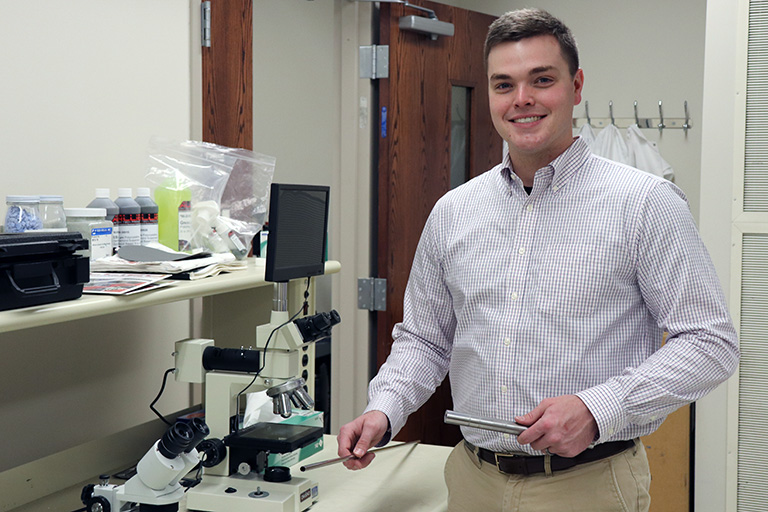
While still largely conceptual, researchers in the US and around the world are working to replace current light water reactors with a new generation of advanced reactors that represent the cutting edge in nuclear technology. Advanced reactors take completely different approaches than light water reactors, operating at higher temperatures and exposing materials to much higher doses of radiation.
One current problem in the development of advanced reactors is that there aren’t yet materials that can withstand the extreme environments associated with them. Caleb Massey, a recent doctoral graduate who studied under UT-ORNL Governor’s Chair for Nuclear Materials Steven Zinkle, is now working at ORNL to help develop a new material that could make advanced reactors a reality.
Through a strategic partnership with ORNL, Massey leveraged its manufacturing and advanced characterization facilities to develop innovative new materials to help increase the readiness level of advanced reactor concepts.
Massey’s research is on Oxide Dispersion Strengthened (ODS) steel, which he compares to the dispersion of chocolate chips in cookie dough, where the chocolate chips represent the oxides that both strengthen the steel alloy and protect it against damage caused by radiation. If the number of particles dispersed throughout the material is maximized, the high number of interfaces attract and annihilate irradiation-induced defects, thus healing the material after irradiation damage.
To put this in perspective, regular steel would swell by more than 50 percent if exposed to high irradiation doses in the 450–550°C degree temperature range of an advanced sodium-cooled fast reactor, while the ODS alloy would show negligible volume change in the same environment.
—Caleb Massey
It has been conjectured that having a high number of interfaces can help on all fronts, which points to why ODS is a very versatile material.
The concept of ODS steel is not a new phenomenon. The first alloys were developed and commercialized in the 1970s and ’80s and were originally designed for fossil, space, and high temperature furnace applications, which required components that had a high temperature resistance to steam. However, these legacy ODS alloys were not optimized for nuclear applications.
As a UT student, Massey worked with a team of scientists at ORNL to develop new ODS alloys specifically designed for nuclear environments.
“Using 21st-century characterization tools, Caleb was able to tailor the alloy composition and processing conditions to achieve unprecedented strength, ductility, corrosion resistance, and predicted radiation resistance,” said Zinkle. “In short, Caleb provided remarkable clarity to explain previously contradictory results by multiple worldwide research groups and single-handedly advanced the technology readiness level of this new class of alloys.”
While ODS is well suited for advanced reactor concepts, it also has some application for current light water reactor designs, which have conventionally used zirconium-based cladding for the nuclear fuel. In response to the Fukushima disaster in 2011, research has been exploring accident tolerant cladding.
For light water reactors, ODS steel holds promise by retaining high mechanical integrity at high temperatures as well as good corrosion resistance and may be in use as early as 2020.
Furthermore, advanced reactors may be deployed shortly thereafter if advanced materials such as ODS steel pass muster. Massey hopes his research to develop new materials for nuclear application will aid in creating the next generation nuclear reactors.
Contact
Élan Young: elan@tennessee.edu